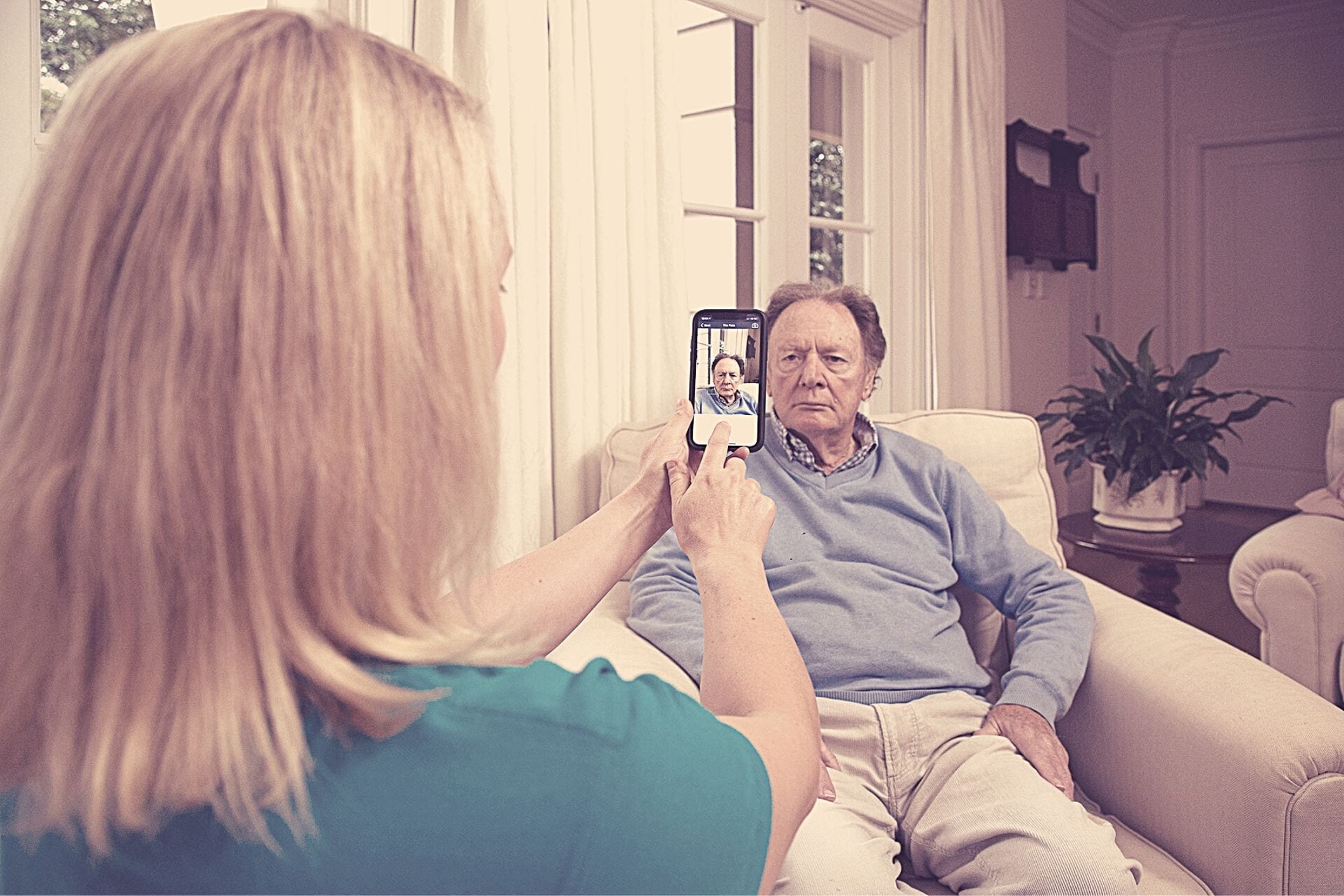
Undiagnosed pain can often lead to the unnecessary use of psychotropic medication to manage the behaviour of these residents, without actually addressing the underlying cause. A recent study by Dementia Support Australia found that 48 per cent of the more than 100,000 aged-care residents living with dementia in Australia are being prescribed last-resort anti-psychotic drugs, despite non-drug treatments delivering significantly better outcomes.
A better solution for pain detection is now available, thanks to recent advances in facial recognition technology.
Smartphone-based medical device, PainChek is giving aged care staff a simple way to assess pain levels in residents who are unable to communicate what they are experiencing.
The technology has been proven to accurately assess pain in people with dementia, which has led to a reduction in the use of psychotropic medication to manage challenging behaviour.
The staff gave the resident a PainChek assessment using a smartphone and discovered that he was experiencing severe pain.
After discussing this finding with staff members, the resident’s GP removed the psychotropic medication and focused on managing the resident’s pain. According to the facility’s staff, he was a “different person” afterwards, as this significantly reduced his agitation.
Giving staff confidence to assess pain
This case study is part of a government-funded national trial of the PainChek pain assessment tool.
More than 990 residential aged care facilities have taken part since the trial began in November 2019, with over 350,000 PainChek assessments conducted on over 12,200 residents across Australia.
Facilities have also reported a renewed focus on pain management, along with increased confidence amongst staff in assessing pain and identifying pain behaviours associated with dementia.
In one case, a resident with challenging behaviour had a long history of complaining about generalised pain. Staff historically believed the pain to be psychosomatic.
Following a renewed focus on pain management, a PainChek assessment was conducted with the resident and revealed moderate levels of pain. They were provided with PRN analgesia, which effectively managed the resident’s pain and, according to staff reports, helped to reduce agitation and stress.
How PainChek works
PainChek uses artificial intelligence and facial recognition technology to automate the pain assessment process. Healthcare providers use the camera in a smart device to look at a resident’s face; the artificial intelligence system then assesses micro-facial features associated with pain, along with 33 additional indicators of pain across five domains: behaviour, vocalisations, movement, activity and the body.
PainChek has now expanded this tool to a complete point-of-care solution called PainChek Universal.
The technology combines the app with the Numeric Rating Scale for pain (NRS): a well-established standard used to document self-reported pain levels in individuals.
PainChek Universal also incorporates analytics into all areas of pain management practice.
Pain scores are documented in real-time, then sent to existing clinical systems and PainChek Analytics. The data – which ranges from assessment frequency to personalised pain ‘red flags’ – empowers clinicians to make decisions about pain management in residents.
PainChek Universal is fully funded by a Federal Government grant, meaning it is available free for 12 months – including setup, training and ongoing support.
Sign-ups close on May 31, 2021. To find out more about PainChek Universal, visit painchek.com. Register online to speak with a member of the team, and claim your risk-free funding entitlement in minutes here.
Very interesting
Great to see finally pain check assessment have improved to support patients and resident with pain relief.